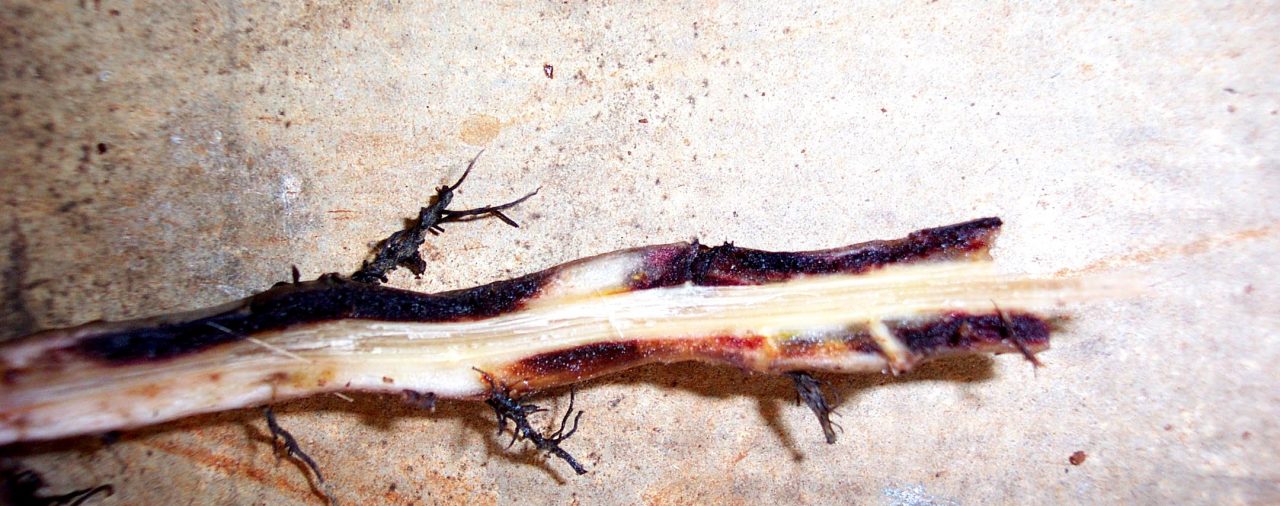By Jennifer Cobon and Wayne O’Neill
The most damaging nematode pest of bananas worldwide is the burrowing nematode (Radopholus similis). The burrowing nematode is common in the tropical and subtropical banana production areas of Australia and previous research projects have resulted in a reduction in its importance.
However we suspected that over time that the populations of other nematode species have increased to levels that are now damaging plants.
To determine what nematodes species are impacting banana production in Australia, surveys were conducted in the tropical banana producing areas of North Queensland, and the subtropical banana producing areas of South East Queensland, Northern and Mid North Coast of NSW and Carnarvon in Western Australia.
This activity is part of the Hort Innovation funded project ‘Improved Plant Protection for the Banana Industry’.
In north Queensland, soil and root samples were collected from 38 banana farms in the Lakeland, Atherton Tableland, Tully and Innisfail areas and the plant parasitic nematodes recovered from these samples were identified.
In north Qld, the root-knot nematode (Meloidogyne spp.) and the banana spiral nematode (Helicotylenchus multicinctus) were recovered from 71% and 11% of soil samples respectively with an average of 3,075 banana lesion nematodes per 100 g of root.
The reinform nematode (Rotylenchulus reniformis) was recovered from 68% of farms with an average of 447/100 g soil.
In the subtropical banana producing areas, a total of 63 farms were sampled across the 3 regions; 10 in SEQ, 12 in NSW and 41 in WA. Again plant-parasitic nematodes were identified and quantified from soil samples and root samples taken from each farm.
In subtropical south east Queensland, the root-knot nematode was recovered from 90% of farms and the banana spiral nematode was recovered from 20% of farms.
This nematode was causing significant damage to roots where it was present with the average number of nematodes recovered being 5245 per 100 g roots.
The lesion nematode and the burrowing nematode were both recovered from 30% of farms.
In subtropical New South Wales, the rootknot nematode, the banana spiral nematode and the burrowing nematode were recovered from 83%, 67% and 17% of farms respectively.
The lesion nematode was recovered from 25% of soil samples and 17% of root samples from the various farms with average numbers of 196/100 g soil and 2,216/100 g roots.
This equates to 33% of farms surveyed in NSW having lesion nematodes in soil and/or root samples.
In the Carnarvon area in Western Australia, the banana spiral nematode and the root-knot nematode were found on 100% and 98% of farms surveyed respectively.
The average number of banana spiral nematodes was 402 per 100 g soil with 6,619/100 g roots and the average number of root-knot nematodes was 149/100 g soil and 4,254/100 g roots.
With 41 out of 47 farms in the Carnarvon district surveyed, this study shows that both the banana spiral nematode and the root-knot nematode are widespread and abundant and may be impacting bananas production in the area.
This survey of plant-parasitic nematodes in the banana producing regions has determined:
- the most common plant-parasitic nematodes are two species of root-knot nematode, the banana spiral nematode, the reinform nematode, the burrowing nematode and the lesion nematode.
- a shift in north Queensland away from the burrowing nematode being the dominant species in banana producing soils
- that the banana spiral nematode is widespread in all banana producing regions
- that almost 100% of farms surveyed in Carnarvon, Western Australia have both the banana spiral nematode and the root-knot nematode.
- the lesion nematode is confined to south east QLD and NSW
- the burrowing nematode is confined to the east coast of Australia
Further research will now be conducted to determine the extent of damage each nematode species causes to bananas under Australian conditions.
The banana industry has been successful in reducing the amount of nematicides used through crop rotation and soil health management.
As there are limited nematicides currently available to the banana industry, effective and sustainable control options forall plant-parasitic nematodes is required.
A long list of non-host crops that can be used in rotation with bananas for the management of the burrowing and root-knot nematodes already exists.
Consequently, the susceptibility of possible rotation crops to the other nematode species identified in this survey will now be assessed so suitable non-host rotations for all nematode pests in Australia can be identified.
It is vital to correctly identify all the nematode pests in your soil – the damage they cause can often look similar.
Once you know your pest, management strategies can be tailored to suit your situation.
Our thanks to Matt Weinert (NSW DPI), Barry Sullivan (Bunchy Top Eradication Officer, southeast Qld), Annie Van Blommestein (Carnarvon Growers Association WA), Valerie Shrubb (DPIRD WA), Tony Pattison (DAF north Qld) and banana growers nationally for their help and assistance with the surveys.
The Improved Plant Protection for the Banana Industry (BA16001) is funded by Hort Innovation using the banana R&D levy and contributions from the Australian Government, with in-kind contributions from the Department of Agriculture and Fisheries. Hort Innovation is the grower-owned, not-for-profit research and development corporation for Australian horticulture.




